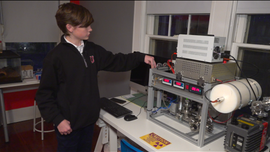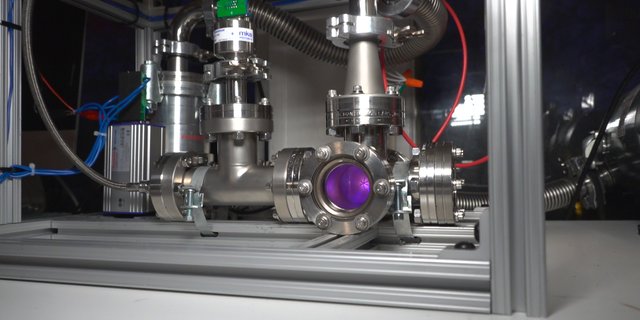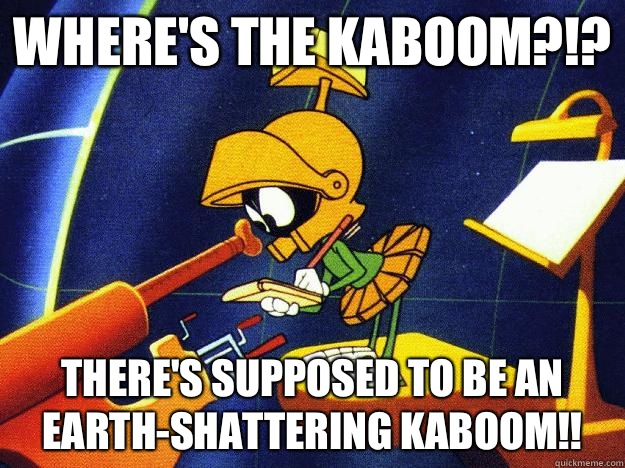

Lots more to the story at the link.
Posted on 02/19/2019 2:56:59 PM PST by ETL
“The start of the process was just learning about what other people had done with their fusion reactors,” explained the mild-mannered teen [now 14-year-old Jackson Oswal].
“After that, I assembled a list of parts I needed. [I] got those parts off eBay primarily and then often times the parts that I managed to scrounge off of eBay weren’t exactly what I needed.
So, I’d have to modify them to be able to do what I needed to do for my project.”
Building the nuclear fusion reactor was no game for Jackson. He converted an old playroom in his Memphis home into a functioning lab.
With the financial support of his parents – he spent between $8,000 and $10,000 over the course of a year collecting the parts he needed to build his nuclear fusion reactor – that was apparently the easy part.
Putting the fusion reactor together and testing to see if it worked was the real challenge. Since there isn’t exactly a manual on how to build something like that he relied on trial and error and the Open Source Fusor Research Consortium, an online forum for amateur physicists, to ensure that he was taking the proper steps toward successfully building a fusion reactor and hopefully achieving fusion.
“After a while, it became pretty simple to realize how it all worked together, but at the start it was definitely figuring out one aspect of it, memorizing what that actually meant and then moving on to a different aspect of it,” Jackson said.
“Eventually all those pieces of the puzzle came together to make a good project.”
(Excerpt) Read more at foxnews.com ...


Lots more to the story at the link.
I mostly shot at peoples’ eyes with BB guns.
Played with matches.
That kind of stuff.
Jackson is, uh....sorta taking it up a notch, or two.
The “Mr. Fusion” reactor on the time-traveling DeLorean....
Does it burn egg shells and beer cans?
Jan 28, 2019
Wow!!!
I hope the young man goes on to invent the first FTL starship drive.
I thought fusion reactors got too hot? Or am I thinking fission?
Sorry, messed up on my post 2.
See 5 instead.
THIS really was once a toy. You could buy the kit in toy stores:

Now I think a SWAT Team would kick down your door and shoot your dog.
The link for the Open Source group is wrong in the article. It should be fusor.net not ‘furor.net.’
I’m going to guess the 50K volts he uses is going to be at a fairly low non lethal current unless he is getting is power from somewhere special.
20 years ago, we had The Radioactive Boy Scout
https://arstechnica.com/science/2016/11/this-fall-the-radioactive-boy-scout-died-at-age-39/

It does get hot but if it is a small enough or quick enough reaction it can be contained.

‘is power’ => ‘his power’
In a fusion process, two lighter atomic nuclei combine to form a heavier nucleus, and at the same time, they release energy.
This is the same process that powers stars like our Sun. Devices designed to harness this energy are known as fusion reactors.
Fusion processes require fuel and a highly confined environment with a high temperature and pressure, to create a plasma in which fusion can occur.
In stars, the most common fuel is hydrogen, and gravity creates the high temperature and confinement needed for fusion. Fusion reactors generally use hydrogen isotopes such as deuterium and tritium, which react more easily, and create a confined plasma of millions of degrees using inertial methods (laser) or magnetic methods (tokamak and similar), although many other concepts have been attempted.
The major challenges in realising fusion power are to engineer a system that can confine the plasma long enough at high enough temperature and density for a long term reaction to occur and, for the most common reactions, managing neutrons that are released during the reaction, which over time can degrade many common materials used within the reaction chamber.
As a source of power, nuclear fusion is expected to have several theoretical advantages over fission. These include reduced radioactivity in operation and little nuclear waste, ample fuel supplies, and increased safety.
However, controlled fusion has proven to be extremely difficult to produce in a practical and economical manner. Research into fusion reactors began in the 1940s, but to date, no design has produced more fusion power output than the electrical power input; therefore, all existing designs have had a negative power balance.[1]
Over the years, fusion researchers have investigated various confinement concepts.
The early emphasis was on three main systems: z-pinch, stellarator and magnetic mirror.
The current leading designs are the tokamak and inertial confinement (ICF) by laser.
Both designs are being built at very large scales, most notably the ITER tokamak in France, and the National Ignition Facility laser in the United States.
Researchers are also studying other designs that may offer cheaper approaches.
Among these alternatives there is increasing interest in magnetized target fusion and inertial electrostatic confinement.
Lol!

Oh shit my mom's gonna be pissed I blew up her microwave.
Fusion - so simple a 12 year old can do it.
Disclaimer: Opinions posted on Free Republic are those of the individual posters and do not necessarily represent the opinion of Free Republic or its management. All materials posted herein are protected by copyright law and the exemption for fair use of copyrighted works.